1. Introduction
In recent years, the golf apparel industry has witnessed a remarkable shift towards sustainability. As environmental consciousness grows among consumers, there is an increasing demand for eco-friendly golf clothing. One of the most significant developments in this regard is the rise of recycled polyester as a primary material for golf apparel. Recycled polyester not only offers excellent performance characteristics but also plays a crucial role in reducing the environmental impact of the fashion industry.

This article aims to provide a comprehensive overview of the entire process, from the recycling of polyester materials to the production of high-quality, stylish golf garments. We will delve into every step of the journey, exploring the advanced technologies and meticulous craftsmanship involved. Additionally, we will highlight how Leto Golf Manufacturing stands out in this field, offering a range of benefits that make us the ideal partner for all your golf apparel needs. Whether you're a golf apparel startup looking to make a mark in the market, an individual with a passion for unique golf wear, a procurement manager seeking reliable suppliers, or a fashion buyer in search of the next big thing in golf fashion, this article is for you.
2. The Growing Demand for Sustainable Golf Apparel

In recent years, the golf industry has seen a significant shift towards sustainability, driven by a growing environmental awareness among consumers. Golfers are no longer just interested in the performance and style of their apparel; they are also increasingly concerned about the environmental impact of the products they purchase. This new mindset has led to a substantial rise in the demand for sustainable golf apparel.
The environmental consciousness of today's consumers is influenced by various factors. The increasing media coverage of climate change, pollution, and the depletion of natural resources has made people more aware of the need to make eco-friendly choices. Additionally, the younger generation of golfers, in particular, is more likely to support brands that align with their values of environmental responsibility.
As a result, golfers are now seeking out golf wear made from sustainable materials. Recycled polyester has emerged as a popular choice due to its environmental benefits. It offers a solution to the problem of plastic waste by recycling used plastic bottles and other polyester-based materials into new fibers for clothing production. This not only reduces the amount of waste going to landfills but also decreases the demand for virgin polyester, which is derived from non-renewable resources like petroleum.
For golf apparel manufacturers, this change in consumer demand presents both a challenge and an opportunity. On one hand, they must adapt to these new preferences and invest in research and development to incorporate sustainable materials like recycled polyester into their product lines. On the other hand, those who can successfully meet this demand stand to gain a competitive edge in the market. By offering sustainable golf apparel, brands can attract a larger customer base, including environmentally conscious golfers, and enhance their brand image as socially and environmentally responsible companies.
In the next section, we will take a closer look at recycled polyester, the key material driving the sustainable golf apparel revolution, and understand how it is sourced and processed.
3. Understanding Recycled Polyester
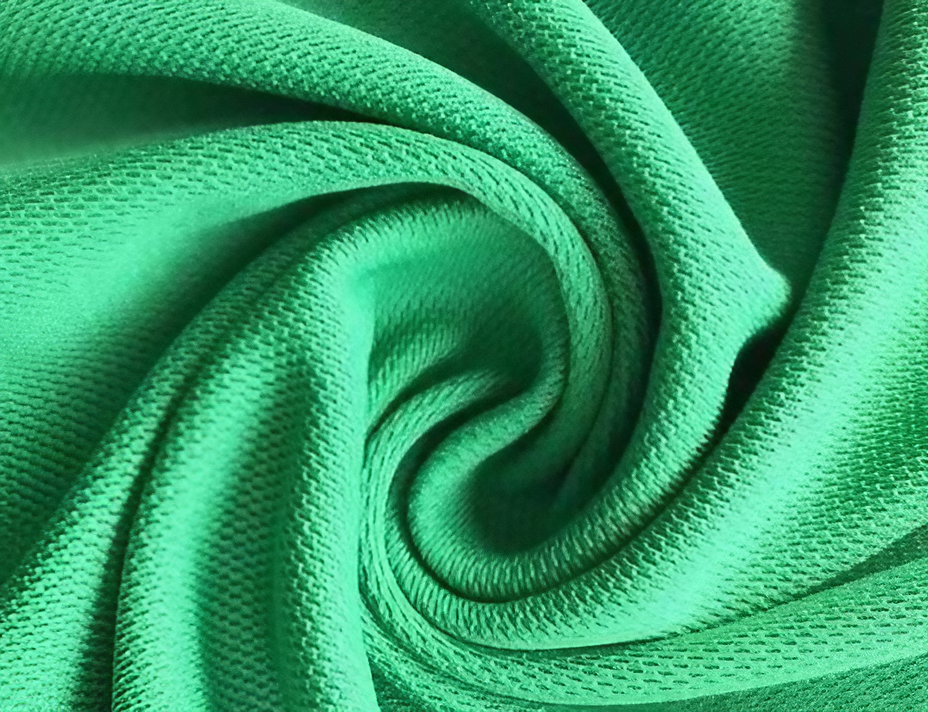
Recycled polyester, also known as RPET, is a game-changer in the world of sustainable materials. It is a type of polyester fiber that is made from recycled materials, primarily post-consumer plastic bottles and other polyester-based waste. This innovative material has gained significant traction in the golf apparel industry due to its environmental benefits and performance capabilities.
3.1 What is Recycled Polyester?
At its core, recycled polyester is created by collecting used plastic bottles and other polyester waste. These materials are then cleaned, shredded into small flakes, and melted down. The melted plastic is extruded into long filaments, which are further processed to form the fibers that are used in textile manufacturing. This process effectively transforms what would otherwise be waste into a valuable resource for the fashion industry.
3.2 Differences from Traditional Polyester
Traditional polyester is produced from virgin petrochemicals, derived from non-renewable resources such as petroleum. This production process requires a large amount of energy and contributes to the depletion of natural resources. In contrast, recycled polyester reduces the need for virgin materials, as it relies on recycled waste.
In terms of performance, while both recycled and traditional polyester offer excellent durability, wrinkle - resistance, and color-fastness, there are some minor differences. Recycled polyester may have a slightly different texture in some cases, but advancements in technology have minimized these differences. For example, modern manufacturing techniques ensure that recycled polyester fibers can be spun to be as fine and smooth as their traditional counterparts, making them equally suitable for high - quality golf apparel.
3.3 Environmental Advantages
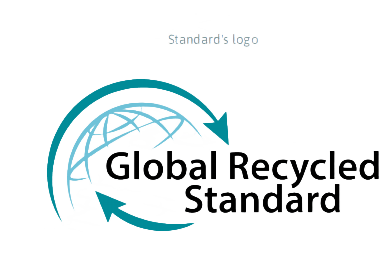
One of the most significant advantages of recycled polyester is its positive impact on the environment. By recycling plastic bottles and other polyester waste, it helps to reduce the amount of waste that ends up in landfills or oceans. According to environmental studies, the production of recycled polyester consumes far less energy compared to the production of virgin polyester. In fact, it can reduce energy consumption by up to 50% in some cases. This reduction in energy use also leads to a significant decrease in greenhouse gas emissions, contributing to the global effort to combat climate change.
Moreover, using recycled polyester helps to conserve natural resources. Since it doesn't rely on the extraction of new petrochemicals, it lessens the pressure on non - renewable resources like petroleum. This makes recycled polyester a more sustainable choice for golf apparel manufacturers, aligning with the growing trend towards eco-friendly production methods.
In the next section, we will explore the initial step in the production of recycled polyester golf apparel: the collection and sorting of waste materials.
4. The Recycling Process: Step-by-Step
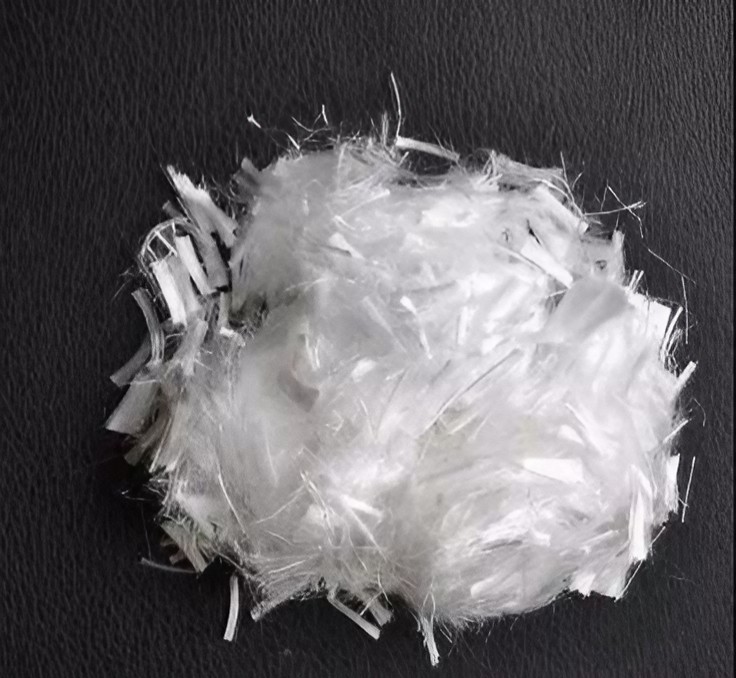
4.1 Collection
The journey of recycled polyester in golf apparel begins with the collection of used plastic bottles and other polyester-based materials. Our collection network is extensive and efficient, covering a wide range of sources. We partner with local recycling centers, municipalities, and waste management companies to ensure a steady supply of recyclable materials. These entities play a crucial role in gathering used plastic bottles from households, businesses, and public spaces.
For example, many cities now have curbside recycling programs where residents can place their empty plastic bottles in designated bins. These bins are then collected regularly by waste management trucks and transported to recycling centers. In addition, we also encourage businesses, such as restaurants, cafes, and offices, to participate in recycling initiatives. They can set up recycling bins in their premises and contribute to the collection of plastic bottles. This widespread collection effort ensures that we have access to a large quantity of high - quality materials, ready for the next stage of the recycling process.
4.2 Sorting and Cleaning
Once the materials are collected, the next step is sorting and cleaning. Sorting is a critical process that involves separating the polyester-based materials from other types of waste. Our state-of-the-art sorting facilities use advanced technologies, including optical sorting machines and manual inspection, to ensure accurate separation. The optical sorting machines are equipped with sensors that can detect the chemical composition of the materials, allowing them to distinguish between different types of plastics. This helps in separating the polyester bottles from other plastics, such as polyethylene (PE) and polypropylene (PP).
After sorting, the polyester materials undergo a thorough cleaning process. The cleaning is essential to remove any impurities, such as dirt, labels, and residual liquids. We use a combination of mechanical and chemical cleaning methods. First, the bottles are mechanically washed in large - scale washing machines using water and detergents. This helps to remove the surface dirt and labels. For stubborn stains and residues, we use chemical cleaning agents that are carefully selected to ensure they do not damage the polyester material. The cleaned bottles are then rinsed thoroughly to remove any remaining cleaning agents, leaving them in a pristine condition, ready for the next stage of the recycling process.
4.3 Crushing and Melting
The cleaned polyester materials are then ready to be transformed into a more malleable form. This is achieved through the processes of crushing and melting. The first step is crushing, where the bottles are fed into powerful crushers. These crushers are designed to break the bottles into small, manageable pieces, typically in the form of flakes. The crushing process not only reduces the size of the bottles but also makes them easier to handle in the subsequent melting process.
Once the bottles are crushed into flakes, they are transferred to melting furnaces. In these furnaces, the flakes are heated to a high temperature, typically around 250 - 280°C. At this temperature, the polyester flakes melt and transform into a viscous liquid. This molten polyester is then carefully controlled and monitored to ensure its quality and consistency. The melting process is a crucial step as it allows the polyester to be reformed into new products, with the properties necessary for high-quality golf apparel production.
4.4 Extrusion and Spinning
The molten polyester is now ready to be transformed into the fibers that will make up the golf apparel. This is accomplished through the processes of extrusion and spinning. The molten polyester is fed into an extrusion machine, which is equipped with a spinneret. The spinneret is a plate with tiny holes, typically ranging from 0.05 to 0.5 mm in diameter. As the molten polyester passes through these holes, it is extruded into long, thin filaments.
These filaments are then immediately cooled to solidify them. The cooling process is carefully controlled to ensure that the filaments form a uniform structure. After cooling, the filaments are stretched, a process known as spinning. Spinning increases the length and strength of the filaments, aligning the polymer chains within the fibers. This alignment gives the fibers their characteristic strength, durability, and flexibility, making them ideal for use in golf apparel. The spun fibers are then wound onto bobbins, ready to be further processed into yarns and fabrics for the production of stylish and functional golf clothing.
5. Manufacturing Golf Apparel with Recycled Polyester
5.1 Design and Pattern Making
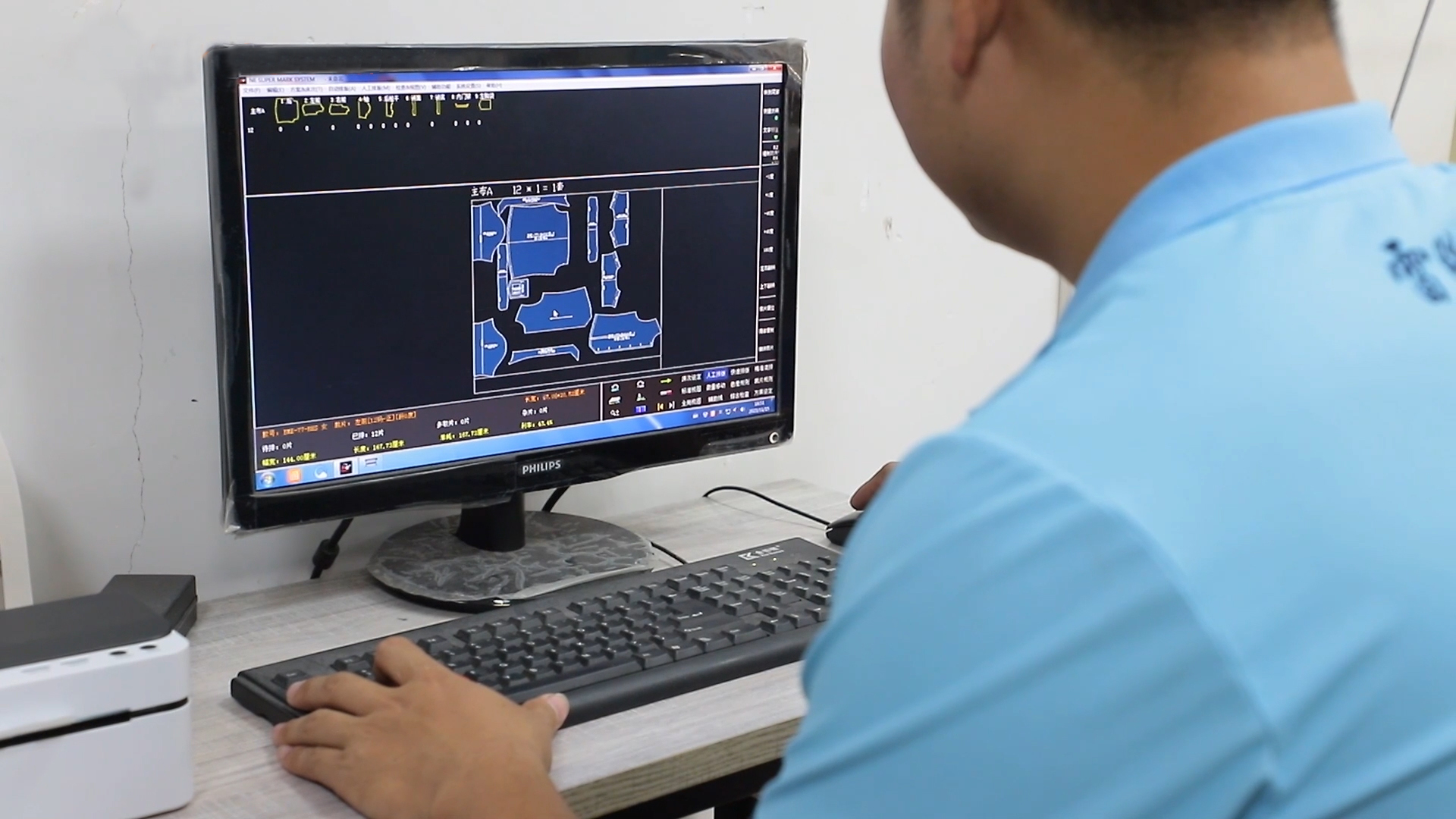
At Leto Golf Manufacturing, our design process is a harmonious blend of creativity and customization. We understand that every client, whether a startup with a fresh vision or an established brand with a distinct identity, has unique requirements. Our team of experienced designers is well - versed in the latest golf fashion trends, but we also take the time to listen to our clients' ideas and preferences.
For golf apparel startups, we offer comprehensive design consultations. We work closely with you to understand your brand's story, target market, and the unique selling points you want to incorporate into your products. Whether it's a new take on the classic golf polo, innovative 4 - way stretch golf pants, or a trendy lightweight golf vest, our designers can bring your concepts to life.
Our pattern - making process is equally meticulous. We use advanced computer - aided design (CAD) software to create precise patterns that ensure a perfect fit. Our patterns are designed to enhance the natural movement of the body during a golf swing, providing non - restrictive mobility. For example, we carefully design the armholes and shoulders of our golf polos to allow for a full range of motion, ensuring that golfers can swing freely without any discomfort. This attention to detail is also evident in our ladies' golf apparel designs, where we focus on creating flattering silhouettes that combine style and functionality.
5.2 Fabric Selection and Testing
Selecting the right recycled polyester fabric is crucial to the quality of our golf apparel. We source our recycled polyester from trusted suppliers who adhere to strict environmental and quality standards. Our fabric selection process is based on a thorough understanding of the performance requirements of golf clothing.
One of the key factors we consider is breathability. Golfers often spend hours on the course, and it's essential that their clothing can wick away moisture and allow air to circulate, keeping them cool and dry. We test the breathability of our fabrics using industry - standard methods, such as the ASTM E96 water vapor transmission test. This test measures how quickly moisture can pass through the fabric, ensuring that our golf apparel can handle the demands of the game.
Durability is another important aspect. Golfers may encounter various terrains and weather conditions, so our fabrics need to be able to withstand wear and tear. We conduct abrasion resistance tests, where we rub the fabric against different surfaces to simulate real - world usage. This helps us ensure that our recycled polyester fabrics can maintain their integrity over time, even with repeated use.
Color fastness is also a top priority. We want our golf apparel to retain its vibrant colors, even after multiple washes. We use the AATCC 16 standard for color fastness testing, which involves subjecting the fabric to repeated washing, sunlight exposure, and other environmental factors. This ensures that our products look great wash after wash.
5.3 Cutting and Sewing
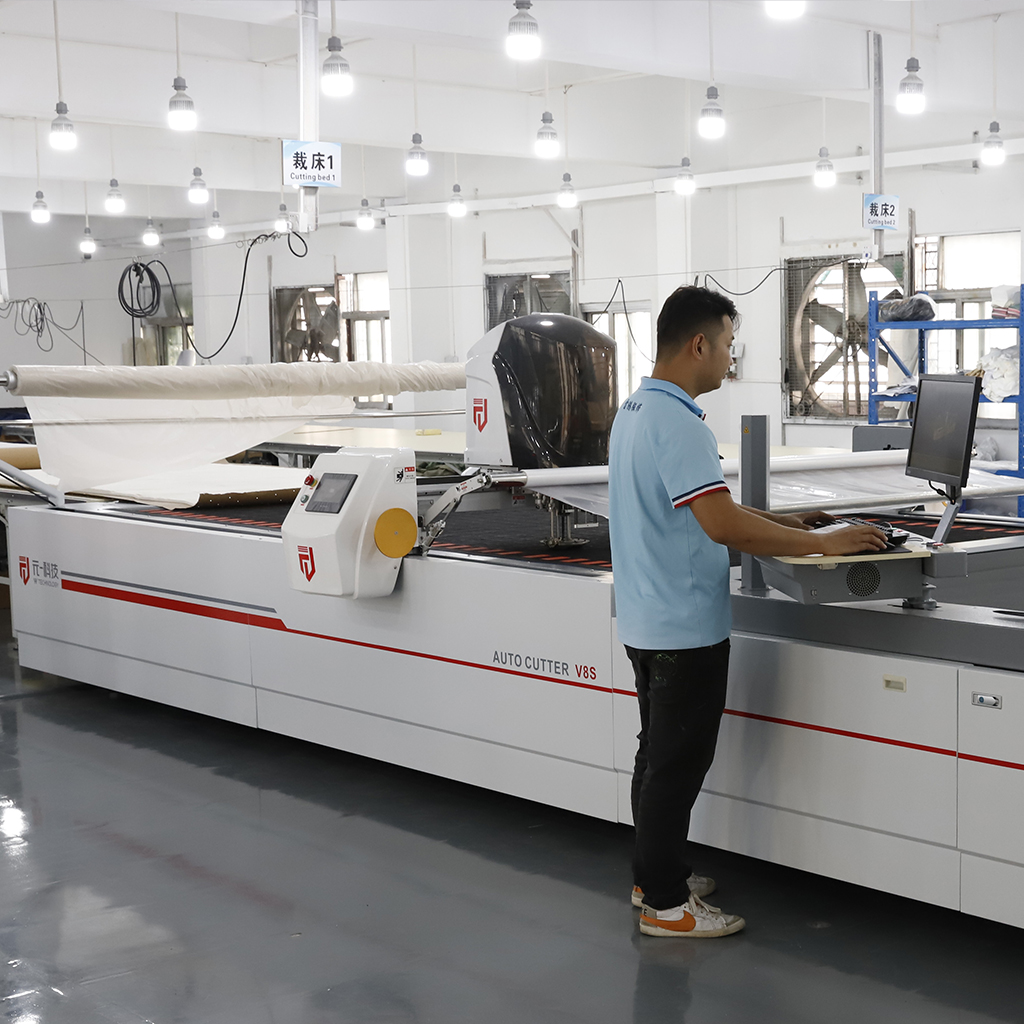
Our cutting and sewing processes are a testament to our commitment to precision and efficiency. We use state-of-the-art cutting equipment to ensure that every piece of fabric is cut with absolute accuracy. Our computer-controlled cutting machines can handle complex patterns with ease, minimizing waste and ensuring consistent quality.
During the sewing process, our skilled artisans use advanced techniques to create high - quality seams. We use double-stitching and reinforced seams in high-stress areas, such as the cuffs, hems, and pockets of our golf pants and shirts. This not only adds durability but also gives the garments a neat and professional finish.
For custom logo embroidery on our golf polos and hats, we have a team of expert embroiderers. We use high-quality embroidery threads and the latest embroidery machines to create sharp, detailed logos. The minimum quantity for custom embroidery on our golf hats is carefully considered to meet the needs of both small-scale orders from startups and larger orders from established brands.
5.4 Quality Control
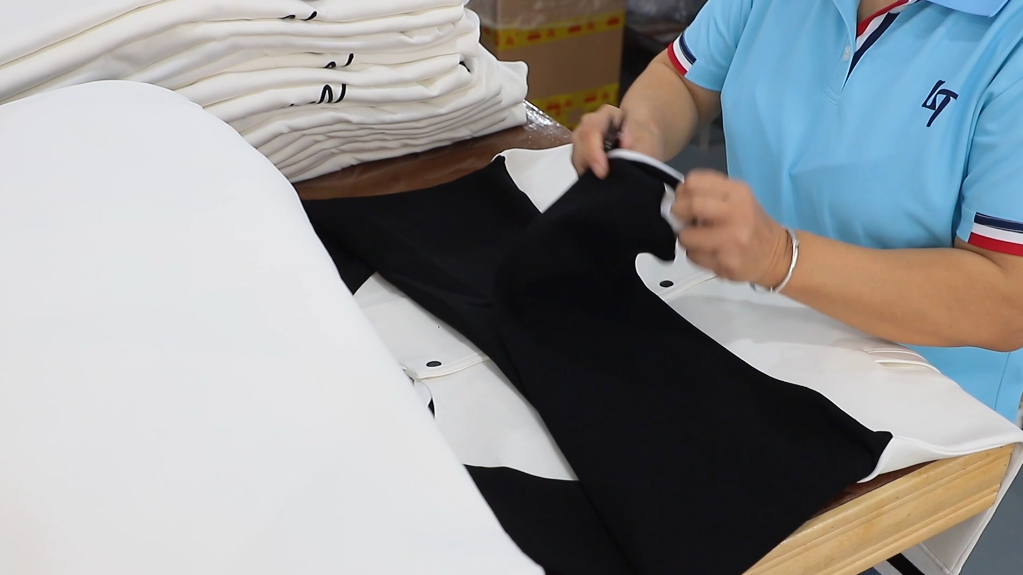
Quality control is an integral part of our manufacturing process at Leto Golf Manufacturing. We have a rigorous quality inspection system in place to ensure that every garment that leaves our factory meets the highest standards.
Our quality control team conducts inspections at every stage of production, from the raw materials to the finished product. During the fabric inspection, we check for any defects, such as uneven dyeing, fabric flaws, or incorrect weights. In the sewing stage, we inspect the seams, stitches, and overall construction of the garments. We check for loose threads, misaligned seams, and any other issues that could affect the quality of the product.
For the final inspection, we have a comprehensive checklist that includes checking the fit, functionality, and appearance of the garments. We ensure that all buttons, zippers, and other accessories are securely attached and in proper working order. Our quality control team also checks that the garments meet all the specifications agreed upon with the client, whether it's a custom - designed golf shirt with a unique logo or a batch of windproof golf jackets for coastal tournaments. This attention to detail ensures that our clients receive products that not only look great but also perform exceptionally well on the golf course.
6. Customization Options Offered by Leto Golf Manufacturing
6.1 Embroidery and Printing
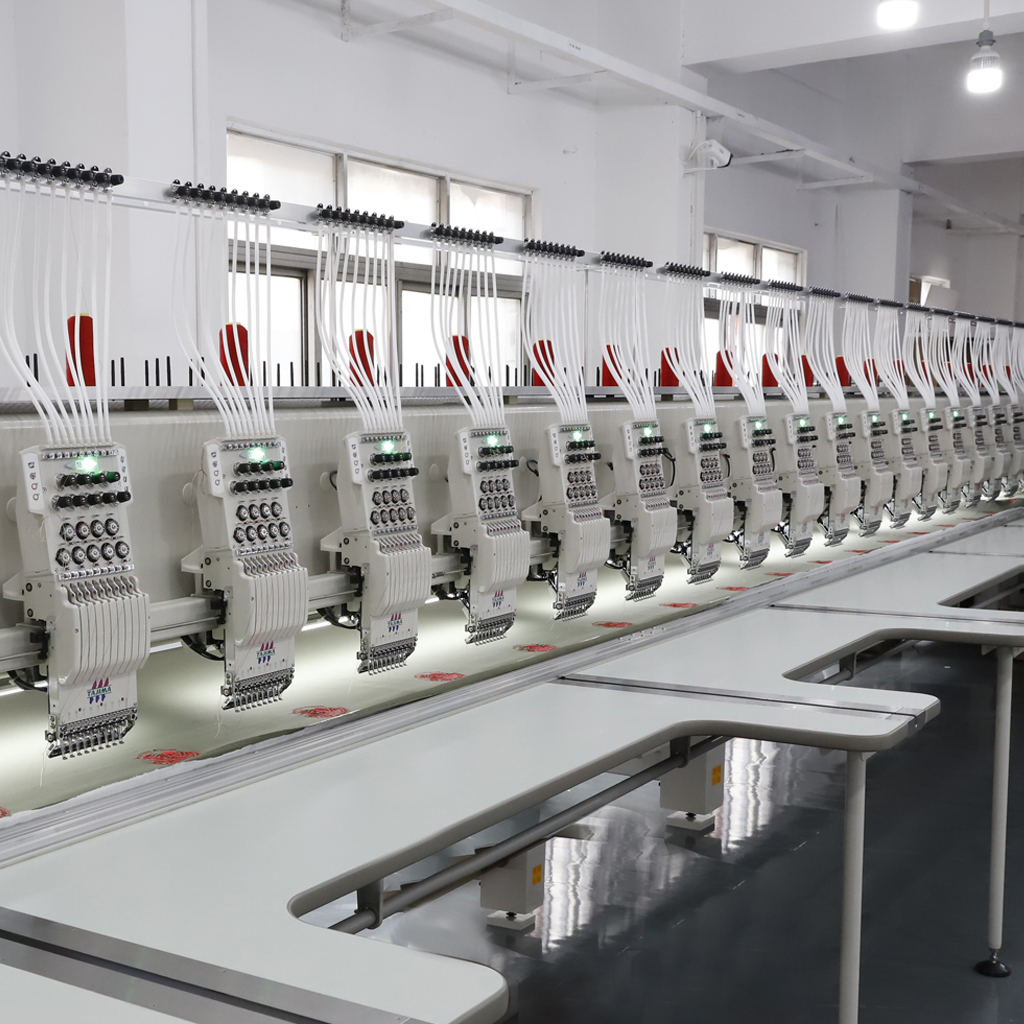
At Leto Golf Manufacturing, we take pride in our top-notch embroidery and printing services. We understand that these customization options play a crucial role in making your golf apparel stand out.
For embroidery, we have a minimum quantity requirement that is designed to be accessible for golf apparel startups and small-scale orders. For example, the minimum quantity for custom embroidery on our golf hats is set at a reasonable number, allowing you to add a personal touch to your headwear without having to place a large order. Our embroidery team is highly skilled and uses state-of-the-art embroidery machines to create intricate and detailed designs. Whether you want a simple monogram, a complex logo, or a unique pattern, we can bring your vision to life. We offer a wide range of thread colors, so you can match your brand colors perfectly.
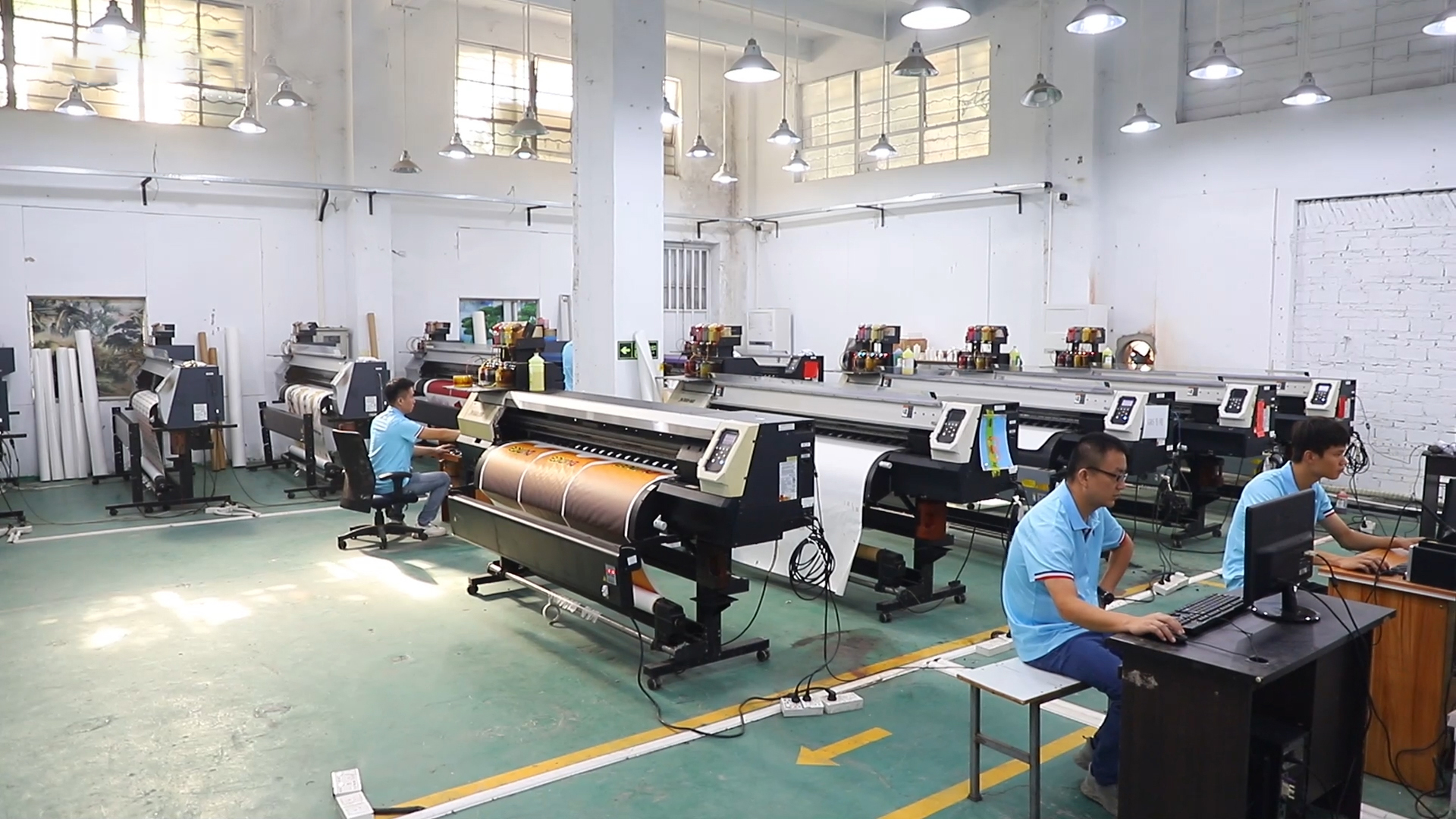
When it comes to printing, we offer various techniques, including screen printing, digital printing, and heat transfer printing. Screen printing is a popular choice for large-scale orders as it provides a high- quality, long-lasting print. Digital printing, on the other hand, is ideal for detailed and full-color designs, allowing for a greater level of creativity. Heat transfer printing is perfect for transferring images and logos onto different types of fabrics. We can print on all parts of the golf apparel, from the front and back of shirts to the sleeves and pockets. Our printing experts work closely with you to ensure that the colors, sizes, and placements of the prints meet your exact specifications.
6.2 Custom Logo and Branding
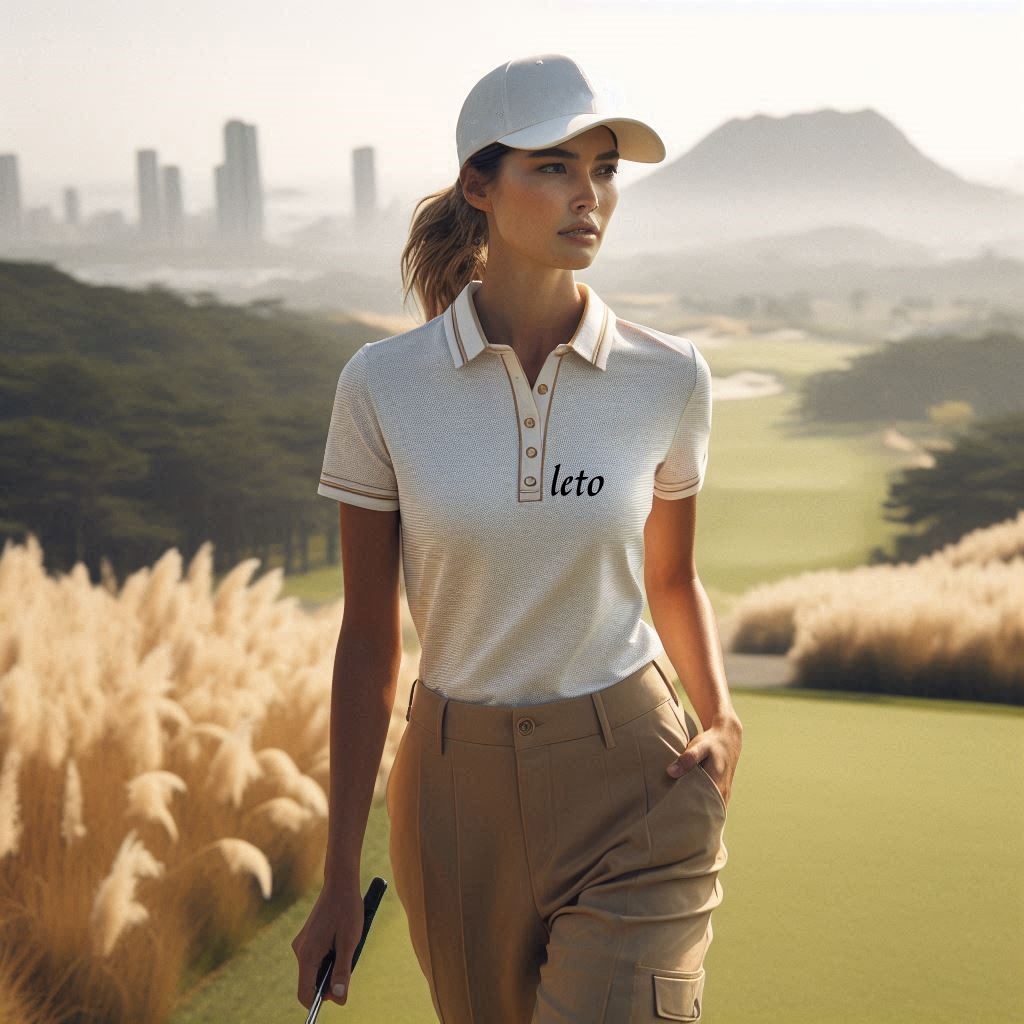
We recognize the significance of a strong brand identity, and that's why we are dedicated to helping you integrate your logo and brand elements seamlessly into your golf apparel. Our team of design experts will work with you to understand your brand's values, style, and target audience.
If you're a startup, we can assist you in developing a logo that represents your brand's unique selling points. We'll take into account the latest golf fashion trends while creating a logo that is both memorable and distinct. For established brands, we ensure that your existing logo is reproduced with the highest level of accuracy and quality. We use high-quality inks and threads for both printing and embroidery to make sure that your logo looks sharp and vibrant, even after multiple washes.
Brand customization goes beyond just the logo. We can also incorporate your brand's colors, taglines, and other visual elements into the design of the golf apparel. For example, we can use your brand's color palette for the fabric, trims, and buttons. This consistent branding across all your golf apparel helps to create a strong and recognizable brand image in the minds of your customers.
6.3 Size and Fit Customization
We believe that every golfer deserves to wear clothing that fits them perfectly, regardless of their body shape or size. That's why we offer a wide range of size and fit customization options.
Our size chart is comprehensive, covering a wide spectrum of sizes, from extra-small to extra-large, and even including plus sizes. If you have specific size requirements that are not covered by our standard size chart, we can create custom - sized patterns. We use advanced measuring techniques and fit models to ensure that the custom-sized garments fit comfortably and flatteringly.
In addition to size, we also offer fit customization. For example, if you prefer a more relaxed fit for your golf polos or a more tailored look for your golf pants, we can adjust the patterns accordingly. We pay attention to details such as the length of the sleeves, the width of the shoulders, and the rise of the pants to ensure a perfect fit. Our goal is to make sure that when your customers put on your golf apparel, they feel comfortable and confident, allowing them to focus on their game without any distractions.
7. Case Studies: Success Stories of Leto Golf Manufacturing
7.1 Country Club Uniform Redesign
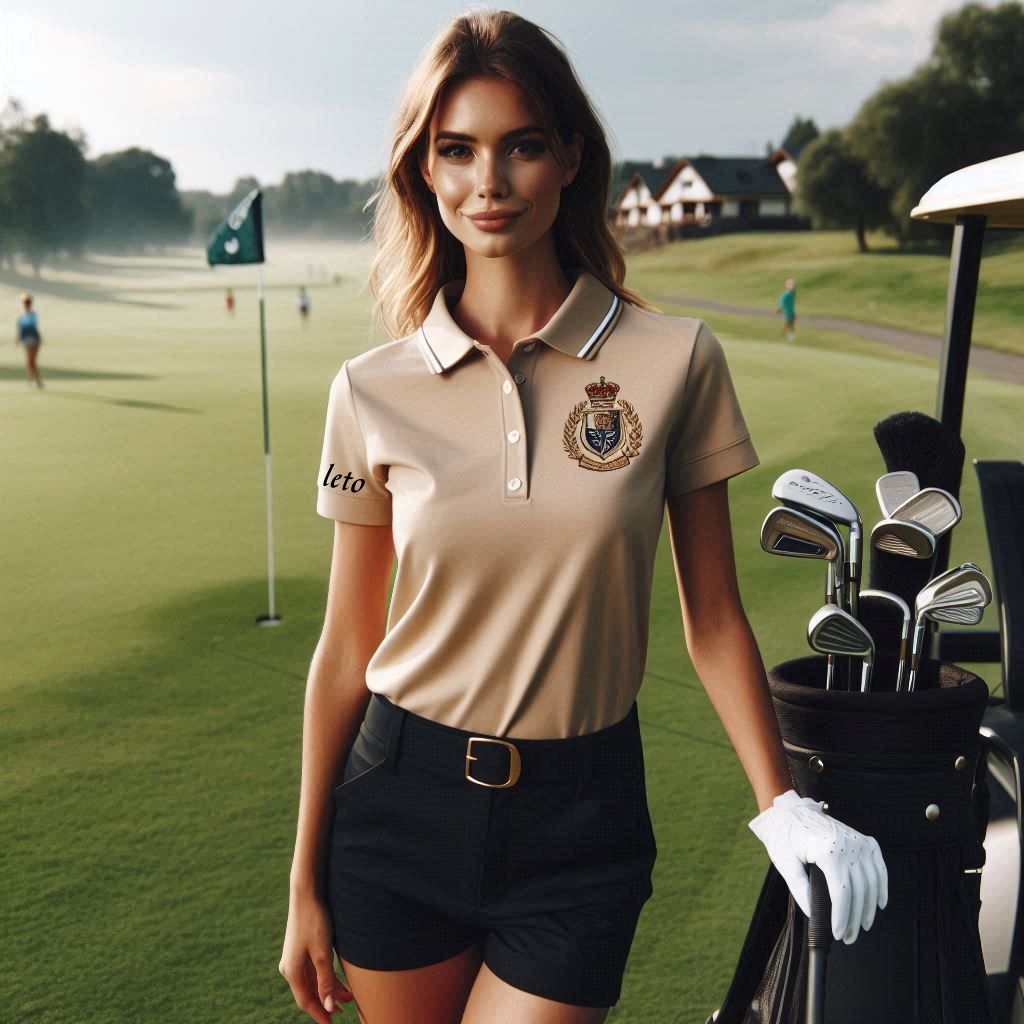
One of our most rewarding projects was the uniform redesign for a prestigious country club. The club had a long-standing tradition but wanted to update its image to attract a younger, more diverse membership while still maintaining its classic charm.
Our design team started by conducting in - depth research on the club's history, values, and the demographics of its current and target members. We also analyzed the existing uniforms to identify what worked well and what needed improvement. Based on this research, we proposed a design concept that combined modern styles with traditional elements.
For the golf shirts, we opted for a sleek, tailored fit made from our premium recycled polyester fabric. The fabric's moisture - wicking and breathability properties were perfect for the long hours members spent on the course. We added a unique embroidered logo on the chest, featuring the club's iconic crest with a contemporary twist. The logo was designed to be subtle yet eye-catching, representing the club's heritage and forward-thinking approach.
The golf pants were designed with a focus on comfort and functionality. We used 4-way stretch recycled polyester fabric to ensure unrestricted movement during the golf swing. The pants had a modern flat - front design and were available in classic colors such as navy and khaki, as well as some new, on - trend earthy tones.
The feedback from the country club was overwhelmingly positive. Members praised the new uniforms for their stylish look, comfort, and quality. The club management reported an increase in membership inquiries, with many new members citing the modern and attractive uniforms as one of the reasons they were interested in joining. This project demonstrated our ability to understand the unique needs of a client, create a customized design solution, and deliver high-quality products that exceed expectations in the realm of team golf apparel.
7.2 Start-up Brand Collaboration

We had the privilege of collaborating with a promising golf apparel startup. The brand had a unique vision of creating affordable, sustainable, and stylish golf wear for the millennial and Gen Z golfers. However, like many startups, they faced challenges in bringing their ideas to life, from design and production to marketing and distribution.
We began our partnership by working closely with their founders to refine their design concepts. Our designers provided valuable insights based on market trends and our expertise in golf apparel. We helped them select the right recycled polyester fabrics that would meet their quality and cost - effectiveness requirements. For example, we recommended a lightweight, breathable recycled polyester blend for their golf polos, which was not only eco-friendly but also ideal for the active lifestyles of their target customers.
In terms of production, we offered a low minimum order quantity (MOQ) of 50 pieces, allowing the startup to test the market without a large financial investment. Our efficient manufacturing processes ensured a quick turnaround time, enabling them to get their products to market faster.
We also provided support in the customization area. The startup wanted to have a unique logo and branding on their products. Our embroidery and printing teams worked with them to create a high - quality, eye - catching logo that would stand out on the golf course. We also helped them with packaging design, ensuring that their products had a professional and appealing look when they reached the customers.
Over time, as the startup grew, we continued to scale our production to meet their increasing demands. Our partnership played a crucial role in their success story. Today, the brand has a growing presence in the golf apparel market, and they credit much of their growth to our reliable manufacturing services, design expertise, and support throughout their journey. This collaboration highlights our commitment to helping golf apparel startups thrive in a competitive market.
8. The Future of Sustainable Golf Apparel
The future of sustainable golf apparel, particularly those made from recycled polyester, looks incredibly promising. As environmental awareness continues to grow, both consumers and brands are becoming more committed to sustainable practices. This shift in mindset is driving the demand for eco-friendly golf clothing, and recycled polyester is at the forefront of this sustainable revolution.
8.1 Technological Advancements
We can expect to see continuous technological advancements in the production of recycled polyester. Manufacturers are constantly researching and developing new methods to improve the quality and performance of recycled polyester fibers. For example, new recycling technologies may be able to extract even more value from waste materials, resulting in higher-quality fibers with enhanced properties. This could lead to golf apparel that is even more durable, breathable, and comfortable, while still maintaining its eco-friendly credentials.
In addition, there may be advancements in the dyeing and finishing processes for recycled polyester. Currently, some of these processes can be resource-intensive and may have an environmental impact. However, future technologies could potentially reduce water usage, energy consumption, and the use of harmful chemicals in these processes, making the production of recycled polyester golf apparel even more sustainable.
8.2 Market Expansion
The market for sustainable golf apparel is likely to expand significantly in the coming years. As more golfers become aware of the environmental benefits of recycled polyester, they will be more inclined to choose these products over traditional golf apparel. This growing demand will attract more brands to enter the sustainable golf apparel market, leading to increased competition and innovation.
Moreover, sustainable golf apparel is not only appealing to golfers but also to a broader range of consumers who are interested in sustainable fashion. This could lead to the crossover of sustainable golf apparel into mainstream fashion, further expanding the market. Brands that are able to successfully position their sustainable golf apparel as stylish, functional, and eco - friendly will be well - positioned to capture a larger share of this growing market.
8.3 Collaboration and Industry Standards

Collaboration between different stakeholders in the golf apparel industry will be crucial for the future of sustainable golf apparel. Brands, manufacturers, suppliers, and environmental organizations will need to work together to drive the adoption of sustainable practices and the use of recycled polyester. This could involve sharing best practices, conducting joint research and development projects, and promoting sustainable initiatives within the industry.
In addition, the establishment of industry standards for sustainable golf apparel will help to ensure consistency and transparency. These standards could cover aspects such as the percentage of recycled materials used, the environmental impact of the production process, and the performance requirements of the final products. By adhering to these standards, brands can demonstrate their commitment to sustainability and provide consumers with confidence in their products.
We encourage all brands, whether startups or established companies, to embrace sustainable practices and incorporate recycled polyester into their golf apparel lines. By doing so, they can not only meet the growing demand for eco - friendly products but also contribute to a more sustainable future for the golf apparel industry. Consumers also have a role to play by making informed choices and supporting brands that prioritize sustainability. Together, we can drive the growth of the sustainable golf apparel market and make a positive impact on the environment.
9. Conclusion

Recycled polyester has emerged as a game-changer in the golf apparel industry, offering a sustainable and high-performance alternative to traditional materials. Its journey from waste to wearable golf clothing is a testament to the power of innovation and environmental consciousness. By choosing recycled polyester golf apparel, consumers can make a positive impact on the environment without sacrificing style or functionality.
Leto Golf Manufacturing stands out as a leader in this sustainable revolution. Our commitment to providing customized design solutions, combined with our efficient manufacturing processes and strict quality control, ensures that we can meet the diverse needs of golf apparel startups, established brands, and individual customers alike. Whether it's a low MOQ order for a startup looking to test the market, a custom-designed uniform for a country club, or personalized golf wear for an individual golfer, we have the expertise and resources to deliver exceptional products.
As we look to the future, the demand for sustainable golf apparel is only set to grow. We encourage all stakeholders in the golf industry, from manufacturers and brands to consumers, to embrace the use of recycled polyester and other sustainable materials. By working together, we can create a more sustainable future for the golf apparel industry, one that is both environmentally friendly and stylish. So, make the choice to go green with Leto Golf Manufacturing and experience the difference that sustainable golf apparel can make.
Post time: 25-03-13








